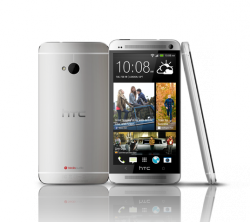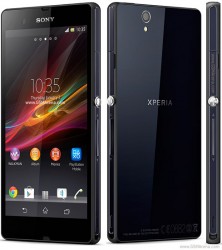Smaller smartphone manufacturers like HTC may increasingly difficult to violence against the marketing of market leaders Apple and Samsung. Maybe the One, HTC’s new Android flagship, since change can bring in DiskIdee HTC One compares with the current top models of Samsung (Galaxy S4) and Sony (Xperia S).
HTC One, Samsung Galaxy S4 and Sony Xperia S are very similar: same operating system (Android ‘Jelly Bean’), processor (600 Qualcoom Snapdragon with Adreno 320 GPU), working memory (2 GB), screen resolution (1920 x 1080 pixels), network support (including 4G), video output (via USB title=”Mobile High Definition Link”> MHL ) and shape (flat rectangle).
There are also differences, which price is the most important: the Samsung Galaxy S4 is about 100 euros more expensive than the HTC One and the Sony Xperia S is there about midway between. 600 to 700 euro also a lot of money, but these are also the current top models in the Android market.
Another difference is the native UI (User Interface) shell that these manufacturers around the standard Android interface expected by HTC Sense, TouchWiz by Samsung and Sony Xperia. ‘Jellybean’ (Android 4.1/4.2) has however a significant improvement compared to predecessor interface ‘Ice Cream Sandwich’ (Android 4.0).
Android “improvements”
Android UI working smoothly than before. The new Google Now-zoekapp succeeds nice to check on the basis of the behavior of the user. Proactively relevant information For example, if you have an appointment, Google Now (if you provide the necessary consents) automatically display information about the route and traffic conditions. If you want, you can directly calculate the fastest route.
Moreover, Google recently Now available on iPhone and iPad and is no longer an Android exclusive, but never mind.
Jelly Bean version 4.2, which is only used but also would come to HTC and Sony, available through the Samsung S4 in this test added some interface enhancements, such as a better “lock” screen with widget support ( so your example with a swipe from sleep mode the camera can start immediately), simpler and more logical placement of widgets on the home screens and an improved overview screen of all warnings.
You call this status screen from top to bottom on the screen wipe. You can immediately take action on notifications.
Android virtual keyboard now supports sweeps from letter to letter so you can quickly sentences types. (This already existed in the optional Swype app.)
The Android interface from version 4.2 otherwise identical between smartphones and tablets. It is true that the new multi-user functionality only works on tablets.
But the extraSELinux-protection layer that was required in order to make, Android multi-user is also present on smartphones. From now on, an Android smartphone impose a strict separation between the professional and the private area, such as BlackBerry 10. This option is only available on the Samsung S4 in the form of Samsung KNOX today, but on our test device was intended for larger companies this add-on is not available.
Another interesting novelty in Android 4.2 is support for Mira Cast (wireless screens via a “Wi-Fi Direct” connection, an open source alternative to Apple’s AirPlay). The One and HTC and Sony Xperia S, still using Android 4.1.2, support Mira Cast moreover al
Because of the improved Android 4.1/4.2 UI we annoy us more personally than ever interface “improvements” like Sense, TouchWiz and Xperia. Of these three “improvements” we find HTC Sense is the least invasive, the overzichtelijkst and the simplest. Samsung TouchWiz grabs the most in the standard Android experience and is so extensive that it is definitely for beginners will befall confusing. Sony Xperia is between these two.
Hardware differences
Also, with regard to the hardware, there are small, but not insignificant differences between these three smartphones.

Sony Xperia S
The 4.7-inch screen of the HTC One is slightly smaller than the 5-inch screens of the Samsung Galaxy S4 and the Sony Xperia Z Because of the same resolution, the HTC One higher pixel density (469 ppi 441 ppi compared to the other two).
Subjective views we find the screen of the Galaxy S4 by far the best (even better than that of the iPhone 5), followed by that of the HTC One and then that of the Xperia Z But the differences are few dramatic: they are three excellent scenes, the subtle differences you see only when you look at them side by side
.
smartphones from HTC and Sony built on firmer feel than the rather plasticky feeling Samsung. This is also a subjective observation: it is not certain that the plastics of Samsung in practice are less sturdy or durable than the aluminum of HTC. However, the Galaxy S4 with its 132 grams lighter than the other two (143 grams for the HTC One and 146 grams for the Sony Xperia S).
HTC One is a few millimeters thicker (9.3 mm vs. 7.9 mm), but the smart, rounded chassis you will notice that in practice hardly. You can all three of them with one hand and operate.
Sony’s Xperia S has IP55 and IP57 approvals: this unit is resistant to dust, water spray and immersion in up to 1 meter of water for 30 minutes. If you immerse in water, you must of course ensure that all port seals are closed. We can report that immersion in a glass of water, in any case, has no negative influence on the operation.
Samsung’s S4 features additional sensors for temperature, pressure and touch-free operation and display manipulations with gloves. We could indeed operate the screen with gloves on. The touch-free operation works through the camera on the front. The operation requires some getting used to and loaded the CPU and the extra battery. By default, these gadgets off. However, in specific circumstances, such as during presentations or repair where you use your smartphone as a reference, they can be useful.
your eyes can scroll through websites or videos pause, is also often useful and worked with us even with our glasses. Quick overview of status messages request? A few times with your palm on the screen waving sufficient.
Samsung has at S4 many apps preinstalled that in practice hardly 9GB remains of the advertised storage of 16GB! Fortunately, you can uninstall the most apps. An alternative is expandable with an SD card. Storage space You can expand the memory. Also with the Xperia S The HTC One can not, but the 32GB storage is still well with the default settings of 23.27, compared to 11.8 of the 16GB at Xperia Z HTC gives you the One way free 25 GB Dropbox cloud storage for one year.
Galaxy S4 and HTC One can be used as infrared remote control. The required apps are included and transform your smartphone into a fairly powerful universal remote . Xperia S has this feature not.
a bonus to the Galaxy S4 yet: you can have two Micro SIM cards lost, compared to only one in smartphones from HTC and Sony
.

Samsung Galaxy S4
smartphones from Samsung and Sony have a camera with a resolution of 13 megapixels. When HTC is only 4 megapixels. But the camera of the HTC One does have sensitive pixels in low light can deliver better results.
Performance
Although these three smartphones are almost identical chipsets, they are not as fast clocked. The Xperia S has a clock speed of 1.5 GHz. The HTC One is 1.7GHz. The Samsung Galaxy S4 with 1.9 GHz on paper the fastest.
regard to benchmark performance, the HTC One and Samsung Galaxy S4 almost evenly matched. The Sony Xperia S is something, but not much slower. In practice, we noticed there is little or nothing and felt all three “fast” to.
The autonomy of a smartphone is very difficult to measure and depends on many factors. In our “worst case” idle test (measured by Futuremark Peacekeeper Battery Benchmark) held the Samsung the longest, followed by the HTC and then by Sony.
The detailed figures of all tests you find in the table below:
| Brand | Sony | Samsung | HTC |
|---|---|---|---|
| Type | Xperia S | Galaxy S4 | One |
| AnTuTu 3.3 Total | 20883 | 25303 | 23970 |
| RAM | 3514 | 4140 | 3824 |
| CPU integer | 4474 | 5239 | 4913 |
| CPU floating point | 4142 | 6837 | 6146 |
| 2D graphics | 1560 | 1577 | 1630 |
| 3D graphics | 6292 | 6606 | 6550 |
| Database IO | 555 | 560 | 560 |
| SD card write (tested on internal memory) | 150 | 150 | 150 |
| SD card read (tested on internal memory) | 196 | 194 | 197 |
| Futuremark 3DMark Ice Storm 1.1 (OpenGL ES 2.0) | |||
| Ice Storm score | 9053 | 11522 | 11447 |
| graphics score | 10554 | 11387 | 11261 |
| physics score (CPU) | 6044 | 12020 | 12148 |
| Extreme Ice Storm score | 5991 | 6869 | 6756 |
| graphics score | 5453 | 6099 | 5971 |
| physics score (CPU) | 6135 | 12314 | 12512 |
| Web benchmarks | |||
| HTML5TEST | |||
| Score (max 500 pts) | 415 | 415 | 430 |
| Bonus points | 11 | 11 | 13 |
| Futuremark Peacekeeper | |||
| Score (landscape mode) | 520 | 510 | 723 |
| Autonomy (min) | 336 | 370 | 345 |
Taking these benchmark figures and other criteria such as construction and screen quality, business security, ease of use, responsiveness and precision of the touch screen, extra features, performance and our overall impression this gives a DiskIdee performance score of 90/100 for the Samsung Galaxy S4 and Sony Xperia S and 88/100 for HTC One.
Conclusion
The HTC One, Samsung Galaxy S4 and Sony Xperia S are quite evenly matched, especially when you take into account with their price. The HTC One has a slightly narrower equipment, especially what the camera is concerned, but should in performance not inferior to the other two. The Samsung Galaxy S4 might is ultimately the best device for advanced users, while the Sony Xperia S with its dust and water resistance may be the somewhat sloppy users can appeal. But for our money, we would buy the firm touch HTC One, also because the least change to the standard Android interface and therefore feels just a little faster than the other two, if not matched by the objective benchmark figures.
€ 599 (HTC One), € 629 (Sony Xperia S), € 699 (Samsung Galaxy S4)
No comments:
Post a Comment